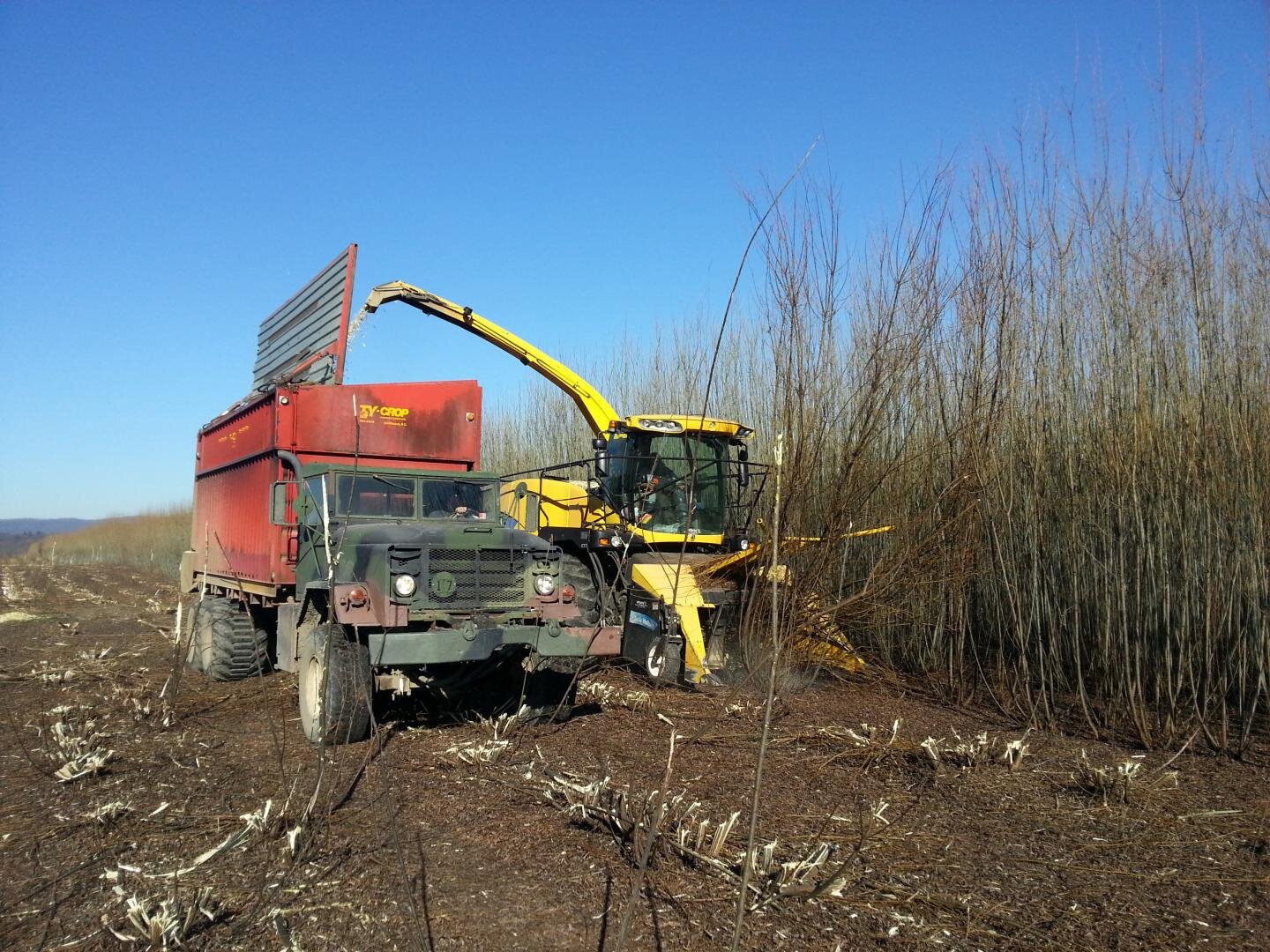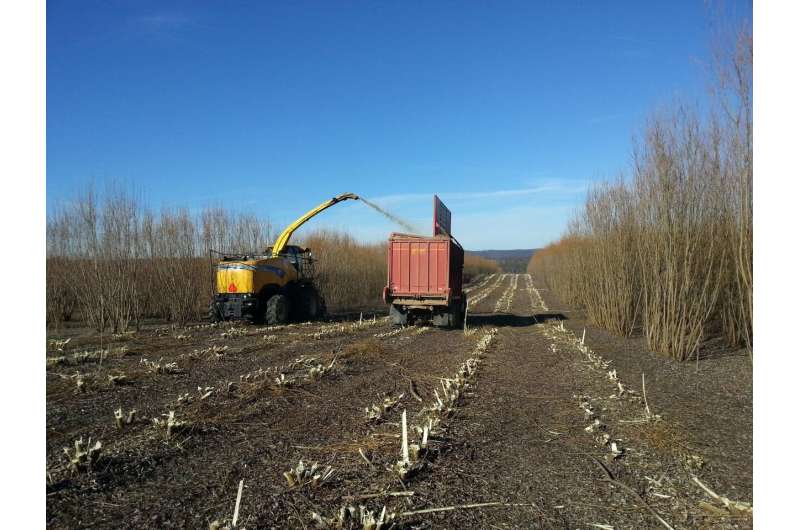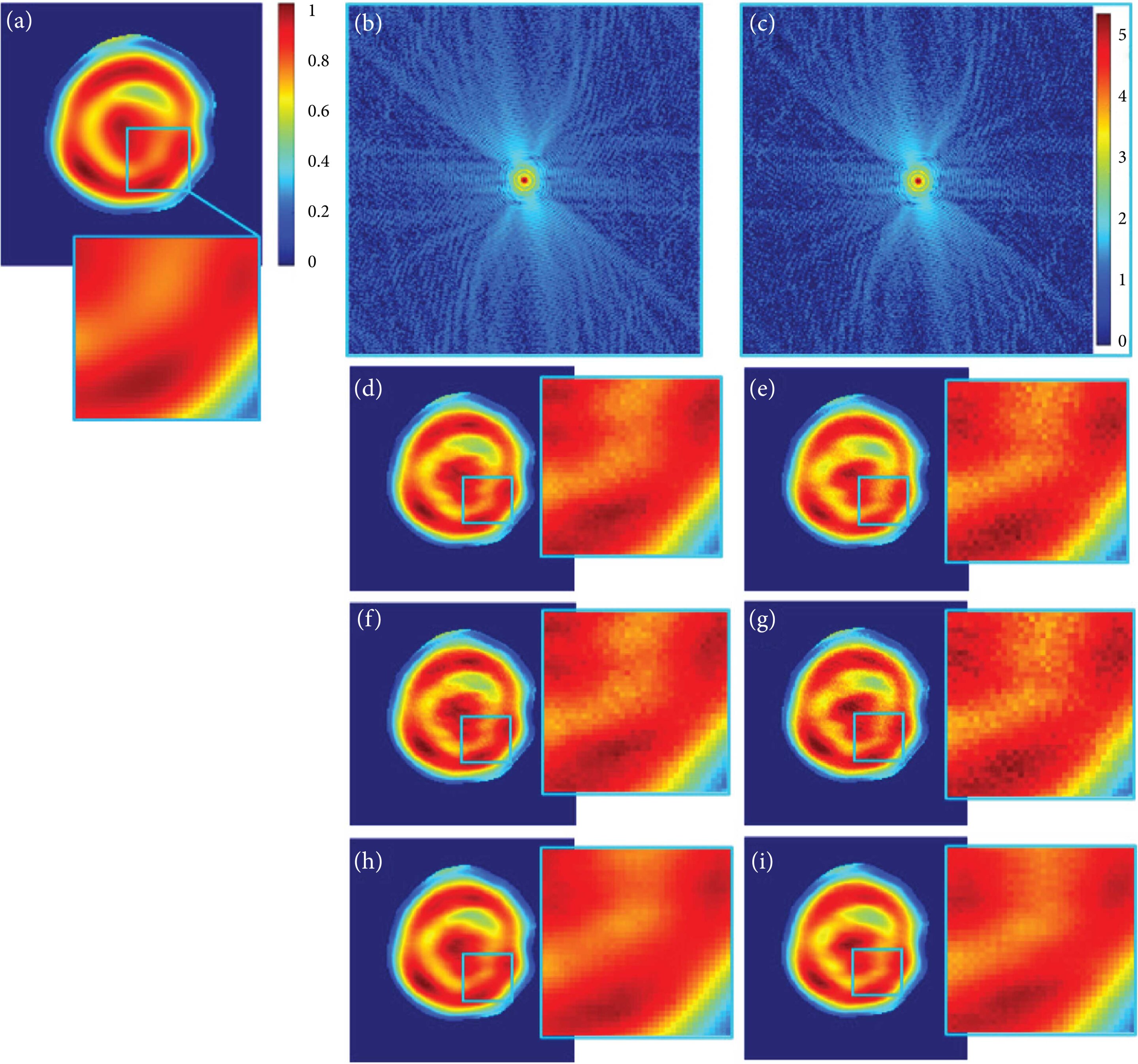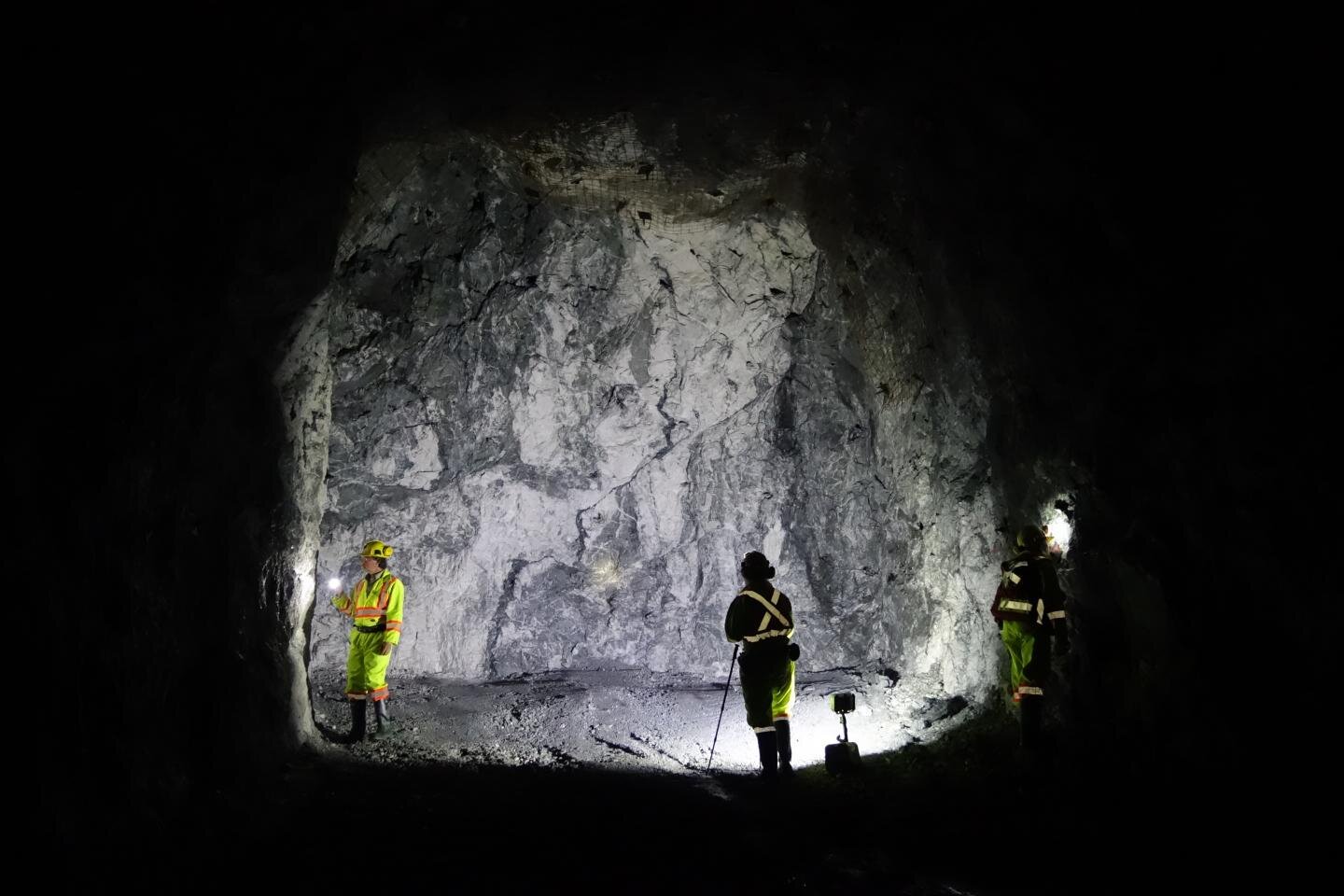#Shrub willow as a bioenergy crop

“#Shrub willow as a bioenergy crop”

Renewable energy demand and consumption is at an all-time high in the United States.
Shrub willow—a quick-growing woody crop—can be an excellent source of renewable bioenergy. The crop is harvested and turned into wood chips, which can be used for heat, mulch, animal bedding, biochar, and biofuel.
In a new study, researchers grew shrub willow on a semi-commercial scale to better understand the nuances of this bioenergy crop. The research was published in Agronomy Journal, a publication of the American Society of Agronomy.
“We learned and developed key know-hows that we can transfer to industry partners interested in this crop,” says Armen Kemanian. Kemanian is a member of the American Society of Agronomy and is the lead author of the study.
Insights include determining which willow varieties to plant and how to best handle planting and harvesting.
“Starting a willow crop can be expensive,” says Kemanian. “It also requires a perfectly choreographed operation to keep costs low and yields high.”
But shrub willow also offers several advantages as a bioenergy crop.
“Shrub willow thrives in wetter areas with cold winters and mild summers,” says Kemanian. That makes the crop well-suited to New England and parts of the upper Midwest.
Other bioenergy crops, such as switchgrass, grow better in areas of the U.S. with warmer summers.
According to Kemanian, “Shrub willow can be part of a geographically diverse combination of bioenergy crops.”
One important quality of shrub willow is its ability to store a tremendous amount of carbon. That’s beneficial because when there is more carbon stored in plants, there is less carbon in the atmosphere.
When the carbon is in the atmosphere as carbon dioxide, it can be a harmful greenhouse gas. But when the carbon is in the plant, it doesn’t pose a risk to the environment.
Shrub willow also has tremendous genetic variability. That’s important for breeding key crop characteristics, such as pest resistance.
“The study found that planting a mixture of willow varieties is critically important,” says Kemanian.
That’s because some highly productive willow varieties attract pests, like the willow leaf beetle. Surrounding these high-yield willow varieties with beetle-resistant varieties can slow down the pests.

“This is a different strategy compared to growing annual crops,” explains Kemanian.
Annuals can be replanted every year. In contrast, shrub willow can be harvested every two to four years for more than 20 years. “Growing different varieties together is critical,” says Kemanian.
The relatively long lifespan of willow crops also means that planning is vitally important.
“Harvest costs account for a large fraction of total operation cost over the life cycle of willow crops,” says Kemanian.
The study established that a well-designed field is easier to harvest. That might seem obvious, but some of the findings are counterintuitive.
For example, while yields are important, seeking the highest possible yield per unit area is not the most critical parameter when planning willow planting schemes.
“Designing fields and plantings so that harvest machinery traffic is efficient is more important,” says Kemanian.
However, the study also found that—at least on semi-commercial scales—actual willow yields could be lower than the expected yield potential.
“Willow thrives in productive soils,” says Kemanian. “Rocky soils can increase planting and harvest cost and lower yields.”
Researchers suggest that when it comes to growing shrub willow, the harvestable crop isn’t the only valuable outcome for farmers.
“We should also monetize the ecosystem services that willow provides,” says Kemanian.
These services include storing carbon, hosting pollinators, reducing water runoff, and retaining nutrients—such as nitrogen—in the soil.
“Willow can play a significant role in improving our most intensely farmed land,” says Kemanian. “We just need to take advantage of the synergies between animal production and crop production.”
But quantifying the ecosystems services of willow at a large scale remains complicated. “We can tackle this challenge with computer modeling,” says Kemanian. “That’s something our team is doing right now.”
Other next steps include monitoring for pest outbreaks with unmanned aerial vehicles (UAVs). These UAVs could also be used to detect and control pests efficiently and economically.
“Ultimately, we think willow can play a role in regenerative and climate-smart agriculture,” says Kemanian.
Experimental biomass harvest a step toward sustainable, biofuels-powered future
Felipe Montes et al, A semi‐commercial case study of willow biomass production in the northeastern United States, Agronomy Journal (2021). DOI: 10.1002/agj2.20603
Citation:
Shrub willow as a bioenergy crop (2021, March 26)
retrieved 27 March 2021
from https://phys.org/news/2021-03-shrub-willow-bioenergy-crop.html
This document is subject to copyright. Apart from any fair dealing for the purpose of private study or research, no
part may be reproduced without the written permission. The content is provided for information purposes only.
If you liked the article, do not forget to share it with your friends. Follow us on Google News too, click on the star and choose us from your favorites.
For forums sites go to Forum.BuradaBiliyorum.Com
If you want to read more Like this articles, you can visit our Science category.




